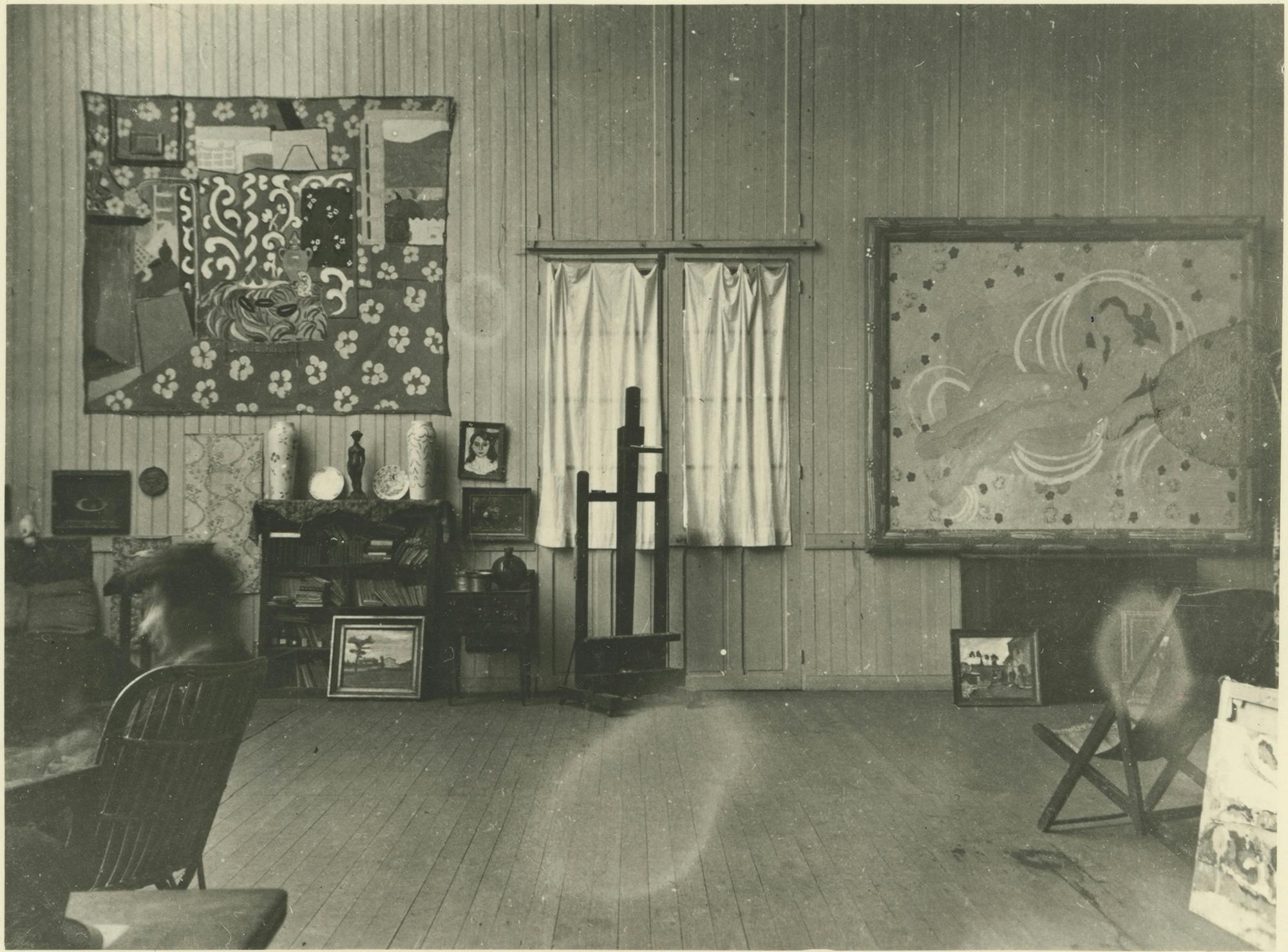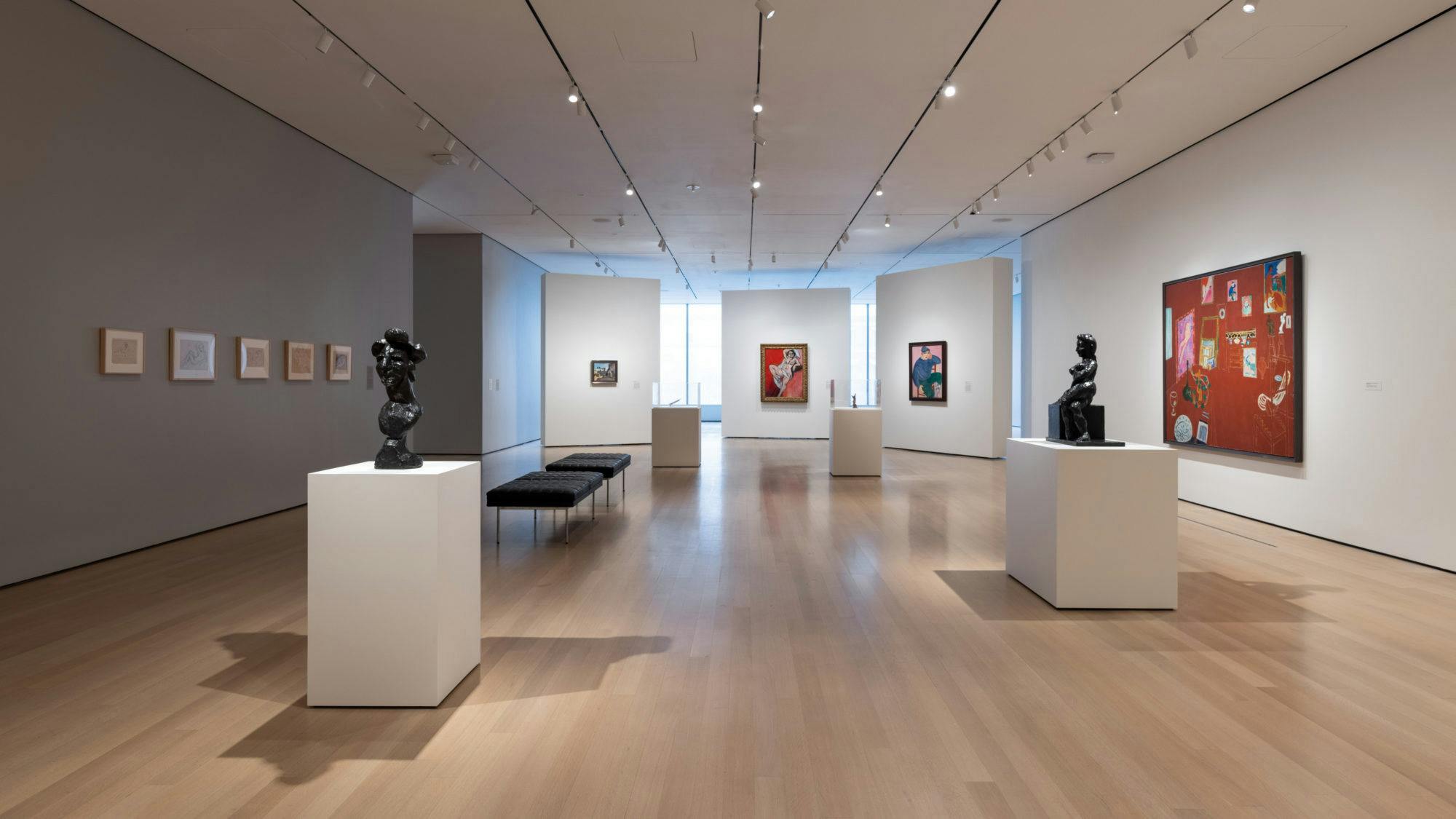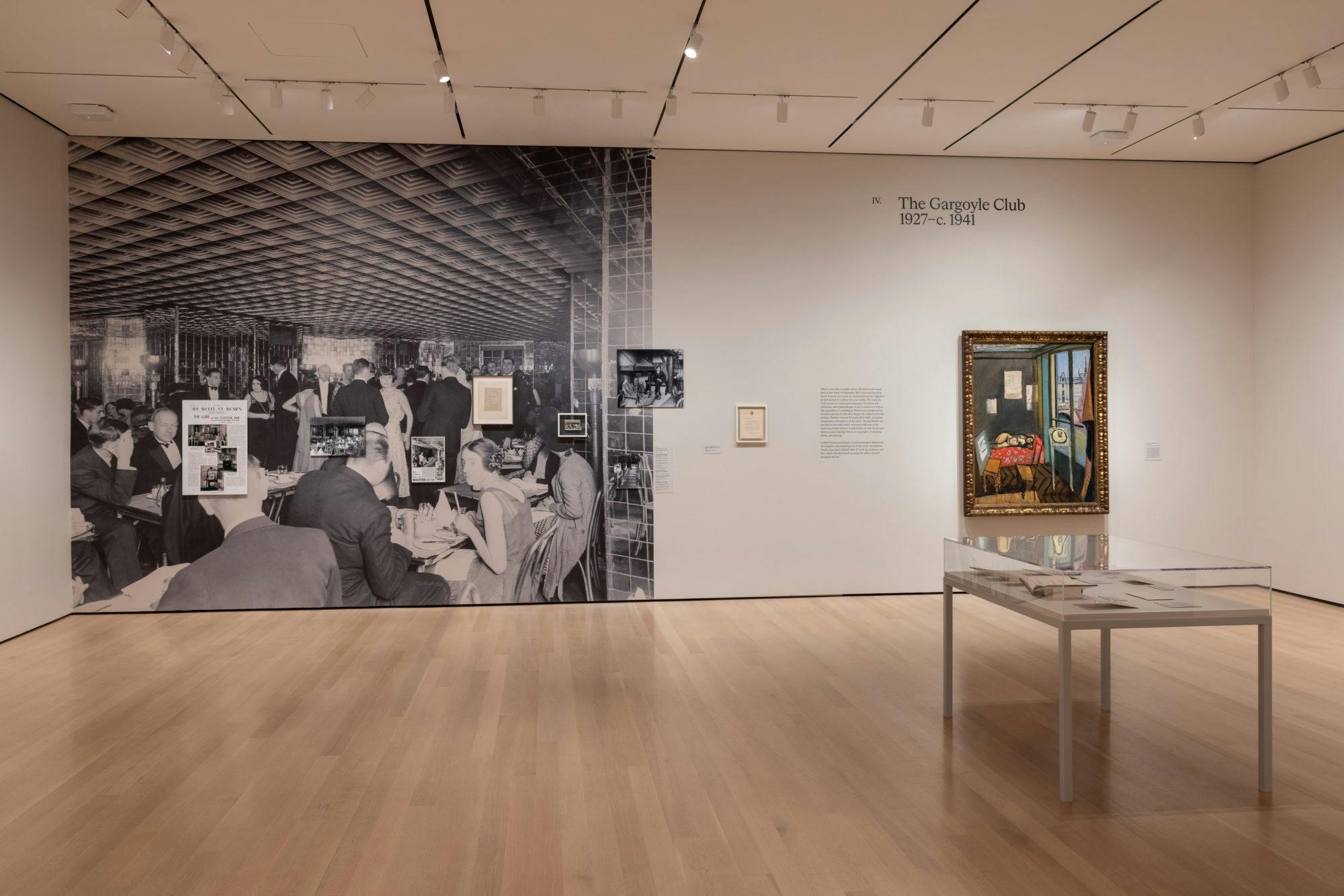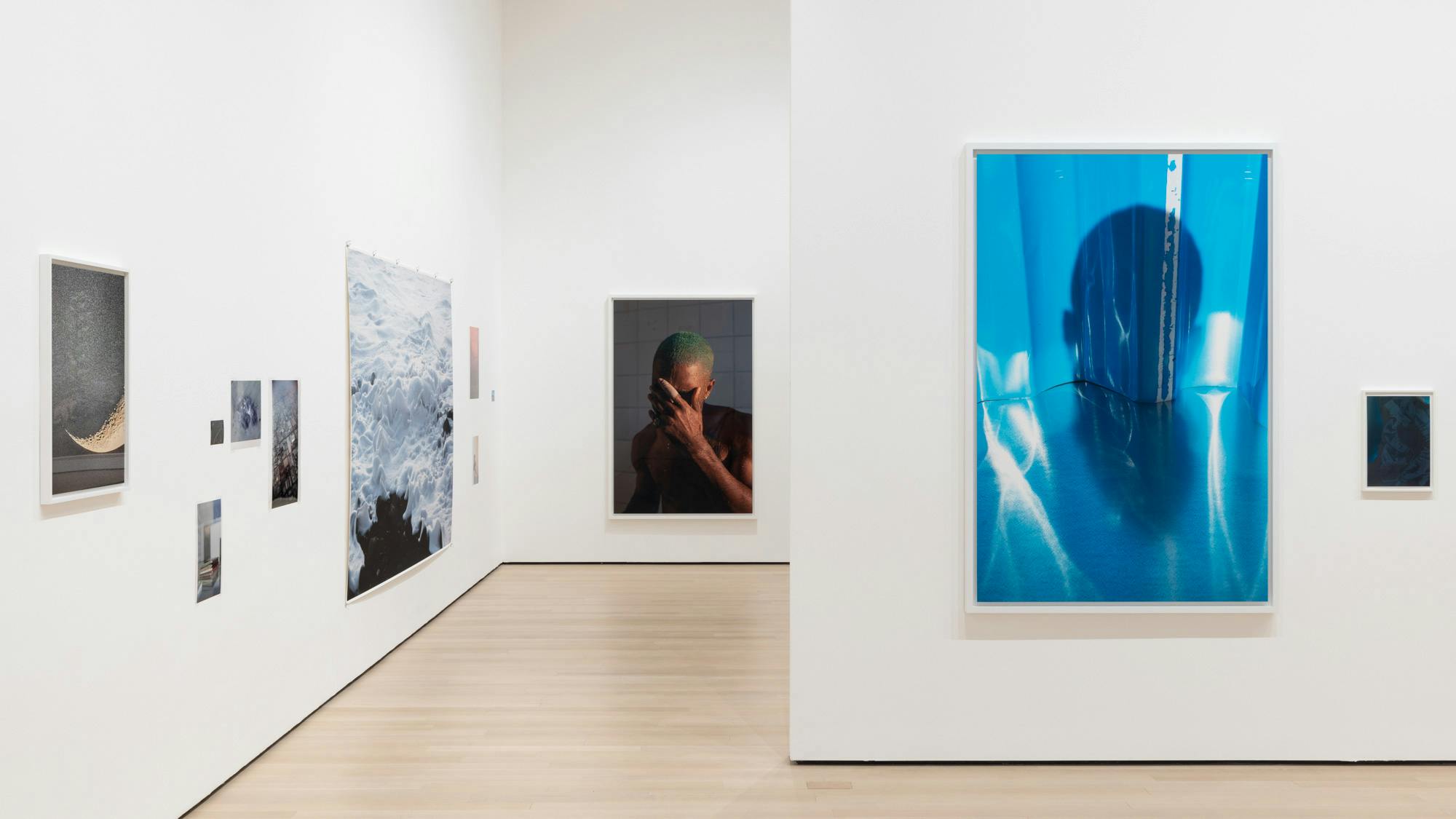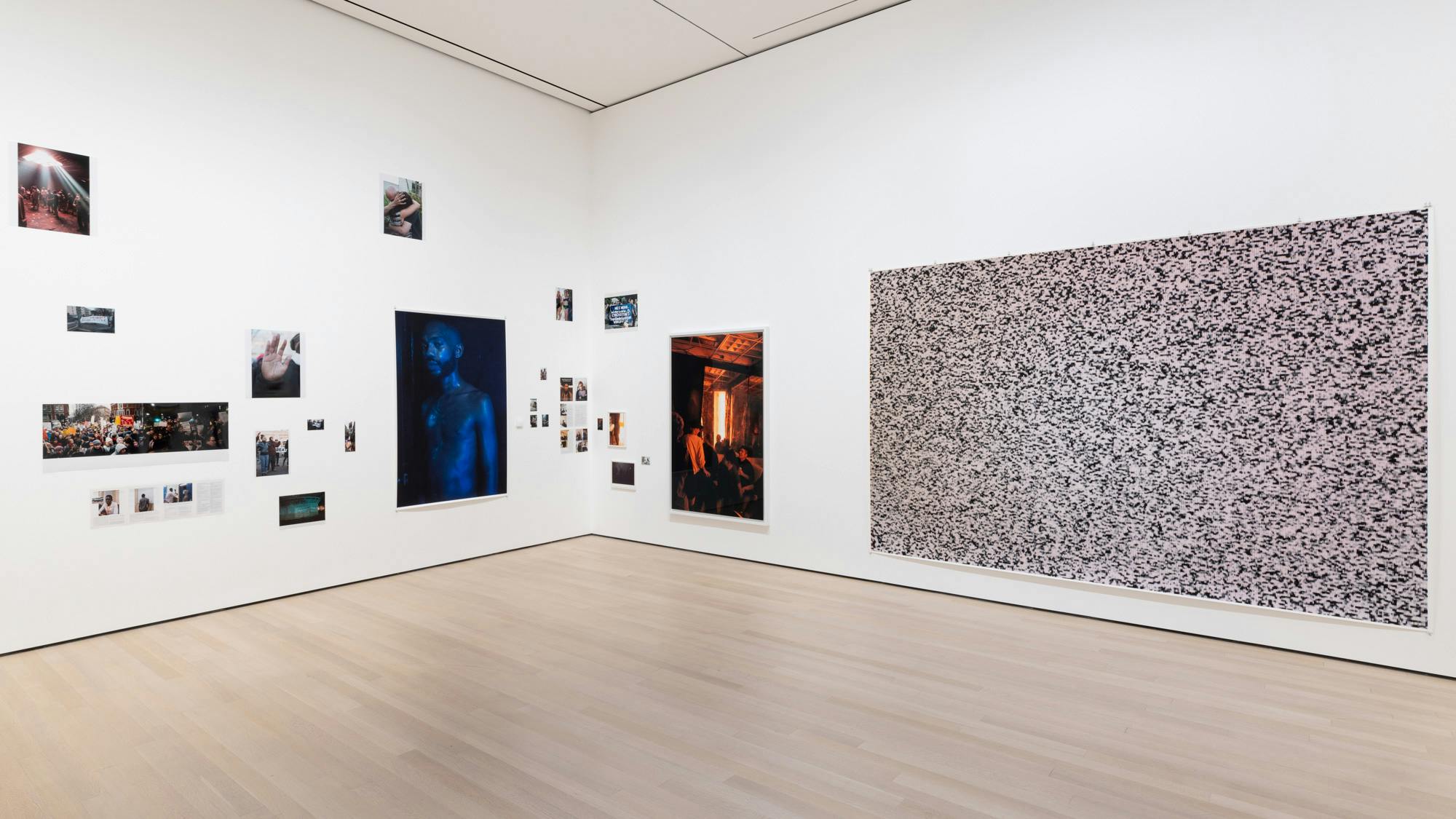Published October 19, 2022
Night Shifts: Art Finds a New Home in Nightclubs

Matisse’s painting, The Red Studio, is spotlighted in a traveling exhibition that just concluded at MoMA and reopened in October at SMK, the National Gallery of Denmark, in Copenhagen. The work, painted at Matisse’s studio in a Parisian suburb, depicts many other works of art, including six paintings, three sculptures, and a ceramic plate within The Red Studio’s frames. The eponymous exhibition reunites The Red Studio with many of the surviving works it portrays.
Beyond simply showing the studio as it was, the work showcases Matisse’s trademark celebration of color by washing it in an all-encompassing red. The piece beckons the viewer into Matisse’s contemplative paradise in turn becoming a landmark of its own and a foundation for modern and contemporary art. But like most art rallying against existing norms, The Red Studio was met with resistance. The work received no positive reception during exhibitions in London or in the 1913 Armory Shows across the U.S. As the fine art establishment decidedly turned its coiffed head away from the piece, Matisse was forced to find a different kind of home for his work.
Instead, The Red Studio’s first home was a member’s only London nightclub, the Gargoyle Club, founded in 1925. The owner, a festive socialite, David Tennant, bought it alongside another Matisse work for £600. The pair had met as Matisse helped to advise on the décor of the club, including personally designing its grand staircase. Partygoers, which included the likes of Fred Astaire, hob-knobbed at themed “pyjama-and-bottle” parties underneath the studio’s bright, red glow. As a nightclub, the acquisition of a daring painting endowed a bold, bohemian spirit to the club. Outside of the vaunted gallery walls, Matisse’s work could be appreciated casually and without pretension. Within the Gargoyle Club, the emotionally expressive and colorful world of Matisse mirrored its own environment.
Eventually, the club would go into decline and Tennant would sell it. Tennant offered the club’s centerpiece to London’s Tate Gallery for a steal: £800. The Tate Gallery declined. The Red Studio exchanged several hands before finding a home in MoMA’s permanent collection after adorning the club’s walls for over twenty years.
Even though the Gargoyle Club was sold by Tennant in 1952, it too would have a foundational role in the art world. The nightclub represented a new sphere in which art could be shown, discussed, and introduced to new audiences. Nightclubs presented a fantasy wherein artists could liberate their visions from the galleries of New York, London, and Paris and instead bring them to the spaces where they spent time and explored their own identities and modes of expression.
In nightclubs, art no longer was subject to the whims of institutional gatekeepers alone—the idea that art could be displayed where one went to drink or dance added to its transgressive nature and heightened the work’s mystique. Beyond the work’s content, the context of being part of an unwieldy nightclub scene made it feel rebellious. Works now could be appreciated by the same crowds who would be ignored by a traditional gallery for not having enough money. The works’ content was radical, and the context of being part of an unwieldy nightclub scene compounded this act of rebellion. Nightclub owners, artists, and partygoers alike benefited from this burgeoning partnership.
Much of the American 20th century art ecosystem was built out of New York City’s nightlife scene, which sometimes functioned as just a meeting place (like Andy Warhol holding court with The Factory at Max’s Kansas City). But other prominent artists, like Keith Haring and Jean-Michel Basquiat reimagined their own gallery space at the Mudd Club in the Lower East Side, and then later at Club 57 in the East Village. In contrast to their glitzy uptown neighbor, Studio 54, these neighborhoods and nightclub scenes showcased punk and counterculture. The clubs empowered artists to become their own curators, de-facto bouncers, and self-made celebrities all at once.
At Club 57, both the artists Haring as well as Basquiat curated exhibitions, promoting early showings of their own work and works from friends like the artist Kenny Scharf. As the club manager and performance artist, Ann Magnuson, said in Artforum, the place held a “punk Do-It-Yourself aesthetic.”
More importantly, Sophie Cavoulacos, the curator of Club 57: Film, Performance, and Art in the East Village, 1978-1983, a 2017 exhibit for MoMA, noted in an interview for Hero Magazine, the small bar setting allowed it to “be an alternative space of any discipline, night to night, and really cater and appeal to an extremely wide range of artists and non-artists.” This shapeshifting venue meant that new exhibits could pop up at any time and find a new audience quite different from the museum set.
Though nightclubs created their own exclusionary funnels, they granted increased exposure to new work, leading to recognition from curators, galleries, and ultimately major museums. Street artists like Basquiat and Haring may have otherwise flown under the radar of the traditional art world had they not taken matters into their own hands. By gaining notoriety in the nightclub scene, galleries began to acknowledge the work of artists they may have otherwise passed over. As evidenced by the Club 57 scene, this access proved particularly powerful for artists of color and queer artists.
But “making it” in the art world still meant being recognized by pre-eminent institutions and museums. In an interview for the New York Times, Kenny Scharf said Club 57 became less fun as artists began to compete against one another. For them, the ultimate mark of acceptance was being featured in the 1983 Whitney Biennial. More than 30 years after Club 57’s doors closed; it was brought back to life in a 2017 exhibit at MoMA. The Club 57 show exemplified the overlap between nightclubs and institutions, including images of the countercultural nightlife scene alongside celebrated works from the period.
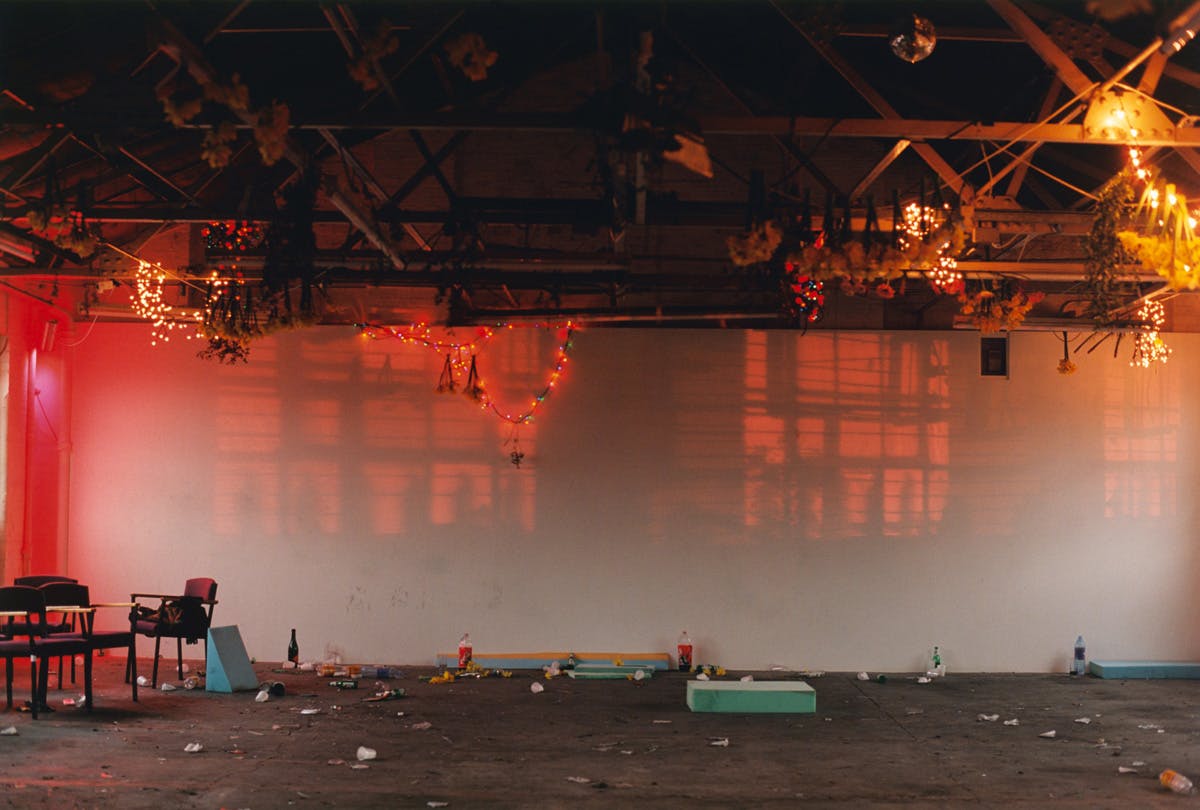
Globally, the trend of showing art within nightclubs has continued into the 21st century. Through its Exhibitionist series, the New York City nightclub, House of X, showcases visual and performance artists, including the projection mapping virtual illusions of Ksenia Salion and the paintings of Paul Anagnostopoulos inspired by queer longing and Greek mythology. Since 2012, the artist-run Beverly’s (co-founded by Leah Dixon) has served as both a bar and “alternative art space” in New York City’s Lower East Side. Billing itself as a “hybrid non-profit arts organization and service establishment,” Beverly’s features work like the group show entitled Mesa Redonda, which featured collaborative artworks from Latinx artists.
Even the world’s most famous nightclub, Berghain, curated an exhibition for Berlin artists while it shut down its infamous parties during COVID-19 lockdowns. Berghain, among other nightclubs, served as inspiration to many artists, including Wolfgang Tillmans, whose work includes vivid images of rave culture. Three of his photographs hold hallowed space as the as one of the only works of art displayed at Berghain. Today, however, his work finds a new home as part of a retrospective exhibition entitled Wolfgang Tillmans: to look without fear at MoMA.
As Cavoulacos noted in the same interview for Hero, the way museums attract visitors changed as a result of the club model, revisioning themselves as somewhere where people can socialize rather than be shushed. Nowhere was this implication clearer than in the events scheduled around this exhibition including listening parties, where attendees can dance in MoMA’s sleek halls to music selected by Tillmans himself. By shifting the modes of engagement, partygoers got a taste of the environments in which Tillmans’ work was made, granting them a deeper connection with the work. While nightclubs did not completely disrupt galleries and museums as the primary way for viewing work, the impact on whose work was seen and how viewers engaged with that work is clear.
The Matisse, Club 57, and Tillmans exhibitions show that institutions like MoMA still hold tremendous power in elevating artists to household names. But they also demonstrate that museums recognize the power of nightclubs as a venue where up-and-coming artists can be discovered. Museums now understand what Tillmans, Haring, Basquiat, and Matisse knew: art doesn’t have to be appreciated in the vacuum of gallery halls alone. The nightlife energy had set a new context in which people could engage with art.
Testudo is always looking for more voices to write with us about the art world. If you’d like to pitch an article, please see our pitch guide for more information!
